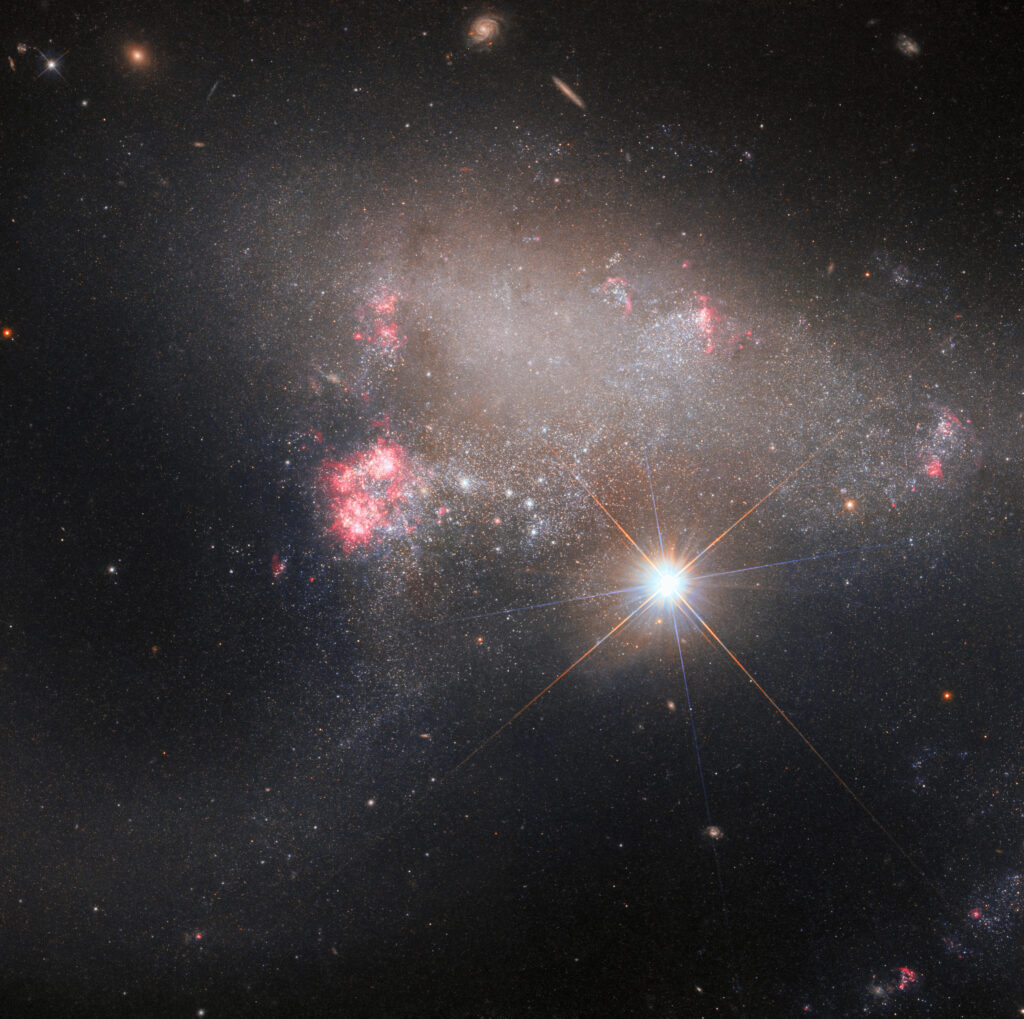The vast majority of objects photographed by the Hubble telescope are located at huge distances from Earth, measured in millions or even billions of light-years. But sometimes, its images also get much closer celestial bodies.

This is exactly what happened in the presented image. Its right side is dominated by a bright object. This is the star BD+17 2217, which is located in our Milky Way. The luminary is surrounded by so-called diffraction rays. This is a characteristic optical effect, often observed in the images of reflecting telescopes. It occurs due to the diffraction of the light flow on the extensions supporting the secondary mirror.
As a rule, diffraction rays have a cruciform shape. But in the case of BD+17 2217, we see two sets of “crosses” at once. This is due to the fact that the image was compiled based on the results of two separate observation sessions.
Hubble’s observations were aimed not at a star, but at a much more distant object — the irregular galaxy Arp 263, which can be seen on the left side of the frame. It is located at a distance of 25 million light-years from Earth in the direction of the constellation Leo.
Arp 263 is dotted with many mottled spots. These are regions of active star formation. Astronomers believe that the appearance and increased activity of Arp 263 is due to the fact that it was formed as a result of the merger of two galaxies.
Hubble photographed Arp 263 during two projects. The purpose of the first was to observe the sites of recent supernovae, such as SN 2012A, which erupted in Arp 263 a little over a decade ago. Astronomers used the powerful wide-angle camera WFC3 to search for the remnants of a colossal stellar explosion. The second study is part of a campaign to photograph all previously unobserved special galaxies from the Arp catalog to find promising objects for further study using the James Webb Space Telescope.
According to https://esahubble.org
Follow us on Twitter to get the most interesting space news in time
https://twitter.com/ust_magazine

